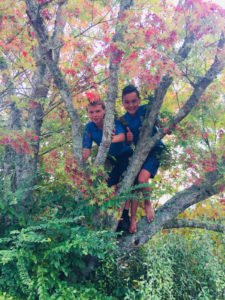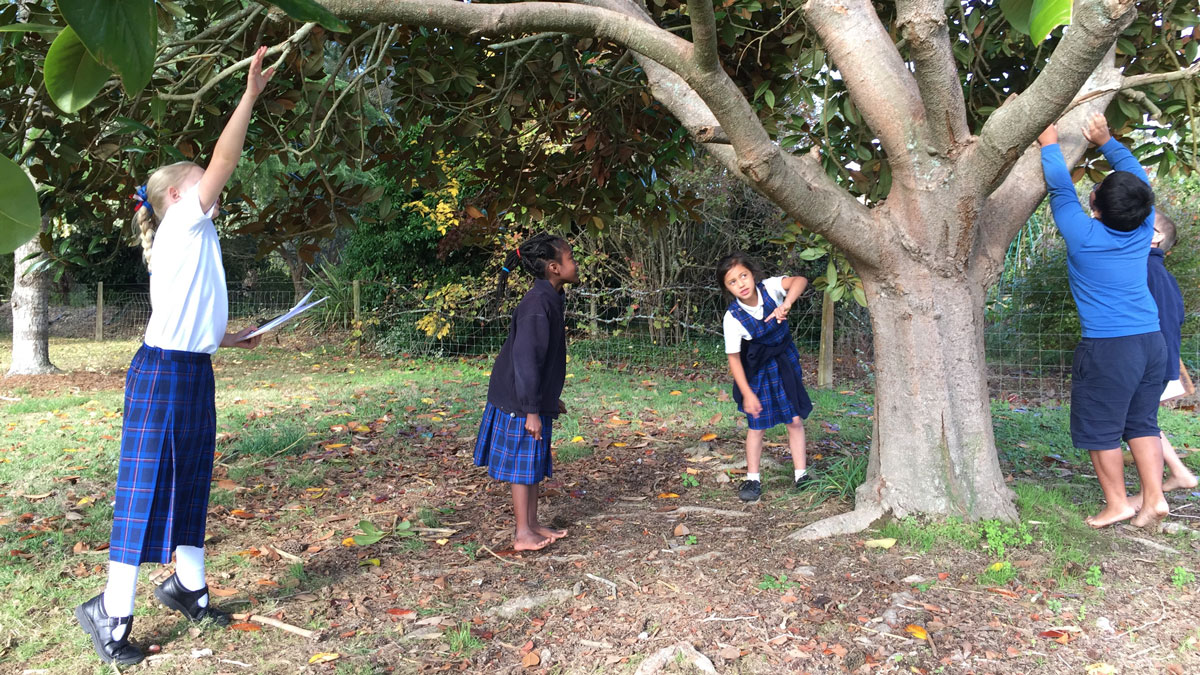Tree climbing enthusiast Celia Hogan challenged the principal at Hamilton Seventh-day Adventist School (New Zealand), Shaun Hurlow, to encourage tree climbing amongst his students.
Mr Hurlow recently attended the Nature Play Conference and came to the conference workshop “Managing Risks and Children in Nature” run by Ms Hogan.
“I love to talk about tree climbing with teachers!” said Ms Hogan. “I get very passionate about it, as anyone who knows me will vouch.”
Keeping children safe during play is important but so are learning opportunities. Empowering children to do their own risk assessment is beneficial, rather than projecting adult fears onto them. “Children who often engage in risky play activities are very aware of their own capabilities,” Ms Hogan said. “They are more capable than we give them credit for.”

Schools have a tendency to ban tree climbing for health and safety reasons. However, according to the Ministry of Education (MOE), New Zealand, an incident does not have to be reported to Worksafe and MOE if it is a minor incident such as a child falling out of a tree who requires a cast but not admission to hospital.
Ms Hogan said “Children should be able to climb a good tree-climbing tree, as high as they can comfortably get down.”
Mr Hurlow raised the concern that some children might climb higher than they can manage to get down so he implemented a strategy to avoid the issue at his school. Together with his students they walked around school grounds and assessed potential climbing trees asking three main questions:
- Is access to the tree easy?
- Are there many branches through the middle of the tree to prevent a fall straight to the ground?
- What is the condition of the branches as a whole (is there dead wood visible)?
They also talked about principles of safe climbing with the children such as always having three points of contact.
According to Ms Hogan, the way adults raise their concerns about a child climbing over the comfort zone can have major impact on a child’s learning outcome. She encourages sharing feelings of worry rather than saying things like, “You are too high”; “You might fall”; or “Come down now.” If a child does feel stuck they may need some guidance to get down. With older children, talking them down is usually enough. With smaller children, adults may have to climb up and guide them down by tapping a foot or talking calmly rather than shouting from the ground. The important thing is not to do it for them.
“I haven’t had any major problems with children getting really stuck up trees,” Ms Hogan said. “Meaning I have never left a kid in a tree for the rest of their life—they have always come down!”






